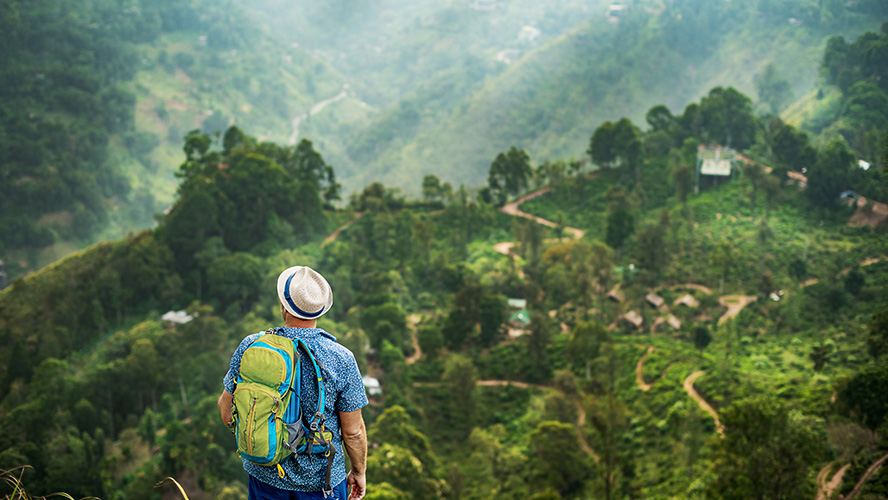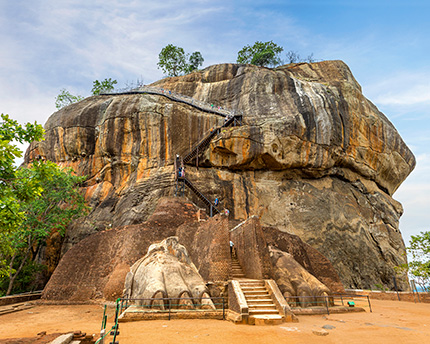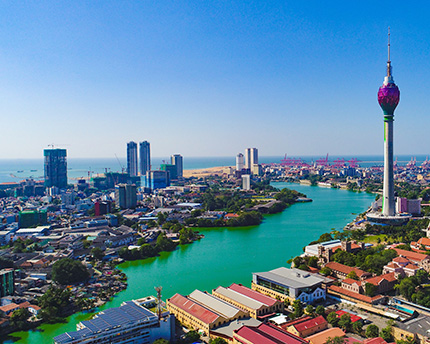Sri Lanka is often referred to as the “teardrop of India” due to its appearance from the skies. This small island, which lies roughly 35 kilometres from the southern Indian coastline, has a total surface area of 65,610 km2 (making it roughly twice the size of Catalonia) and 20 million inhabitants.
The country formerly known as Ceylon was a British colony until 1948. Even after becoming an independent nation, it didn’t assume its current name of Sri Lanka until 1972.
It is a democratic presidential republic whose recent past has been marked by a bloody civil war that lasted from 1983 to 2009. In 2022, Sri Lanka found itself on the front pages of international newspapers when widespread social discontent — driven by the economic crisis brought about by the COVID-19 pandemic and perceived poor governance — led citizens to storm the presidential palace, which resulted in the resignation of the president and prime minister.
Two years later, Sri Lanka is a popular destination for travellers from all around the globe who are looking to find paradise on Earth and enjoy a break from the day-to-day routine. It is home to outstandingly beautiful natural landscapes that are defined by majestic mountains, beautiful beaches and historic tea plantations; an animal kingdom in which elephants and leopards reign supreme; and a cultural richness that, thanks to the country’s religious diversity and its evolution over time, offers unique places to visit such as the remains of the ancient city of Sigiriya, which was declared a UNESCO World Heritage Site in 1982.
As is the case with any faraway destination that can only be reached by flying halfway around the world, we recommend staying for at least one or two weeks to make the most of your trip. You’ll be pleased to know that Sri Lanka is also a relatively affordable country to visit. However, due to its tropical climate and the threat of monsoons, you should research the best time of year to visit this pearl of the Indian Ocean.
Sri Lanka’s cultural triangle
Sigiriya
Sri Lanka boasts eight UNESCO World Heritage Sites, with the remains of the ancient city of Sigiriya being the most visited and well-known among international tourists. Sigiriya is famous for its 5th-century palace complex built on top of ‘Lion Rock’, 200 metres above ground level.
This rock formation of volcanic origin is located in the heart of a vast forest. This complex, which was commissioned by King Kashyapa (who reigned from 473-495 A.D.), forms part of what is known as Sri Lanka’s ‘cultural triangle’: a set of archaeological remains located in a green and mountainous region in the middle of the island. Polonnaruwa, Anuradhapura and Dambulla — which are also categorised as World Heritage Sites — also form part of the triangle.
Following Kashyapa’s death, the city was inhabited by Buddhist monks up until the 14th century. It was subsequently abandoned and remained uninhabited until Jonathan Forbes, a member of the British army, rediscovered the city in 1831.
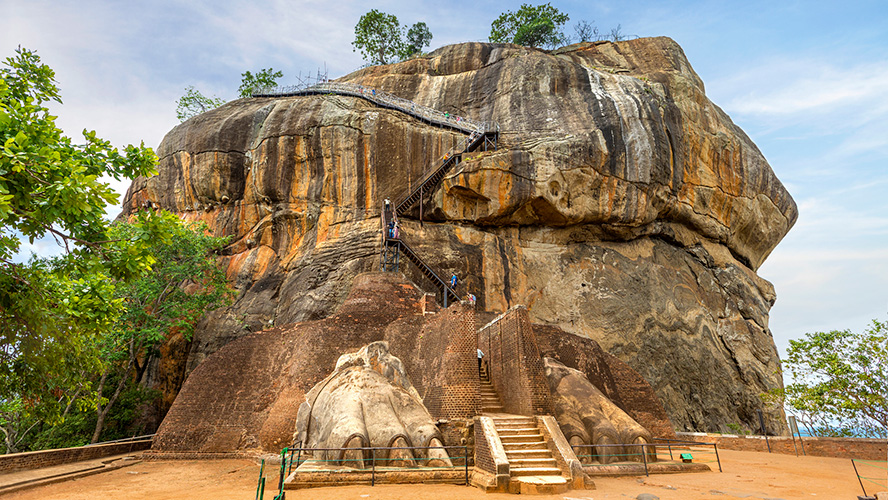
It takes around one hour to climb the 1,200 steps to the top of Lion Rock. We recommend doing so at dawn to avoid getting stung by the giant bees that are sometimes found at the halfway point. Doing so at this time of morning will also allow you to watch the sun go up from the top of this iconic landmark.
As you begin your ascent from the Royal Gardens (which are among the oldest in Asia) and ponds, you’ll pass through a pair of giant stone claws that once formed part of a huge lion-shaped structure that was known as ‘Lion Gate.’ As you climb up the rock, you’ll pass by various frescoes depicting women that were painted onto the rock hundreds of years ago.
To get the best photo of this iconic natural structure, we recommend climbing to the top of the nearby Pidurangala Rock, which is located one kilometre away.
Polonnaruwa
The ancient city of Polonnaruwa, which was also declared a UNESCO World Heritage Site in 1982, was the seat of the Sinhalese kings from the 11th to the 13th century. The Sinhalese Kingdom (543 BC-1815 AD) refers to a series of successive kingdoms that existed in the country – one of which was the Kingdom of Polonnaruwa.
Following the Chola conquest of Anuradhapura in 993, Polunnaruwa became the second capital of Sri Lanka. Several Brahmanic monuments — corresponding to the Brahman priestly caste in Hinduism — date back to this era. The city was later reclaimed by the Sinhalese kings, and a garden city was created during the reign of Parakramabahu the Great (1153-1186).
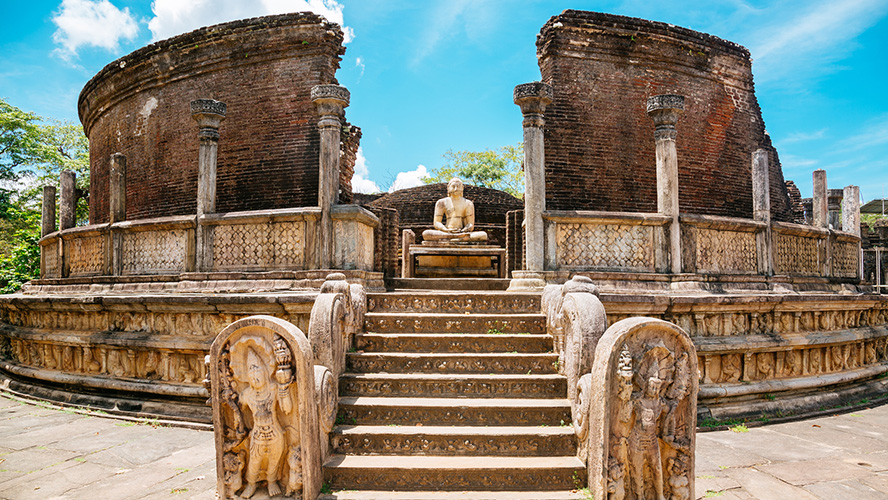
With a surface area spanning 122 hectares (running five kilometres from north-to-south), Polonnaruwa is located in the central-northern part of Sri Lanka next to the immense Pakrama Samudra reservoir. It is a 55-kilometre drive from Sigiriya. If you’re looking to travel to Polonnaruwa from Colombo, which is Sri Lanka’s commercial capital and the location of its busiest international airport, you can get there via a seven-hour train journey.
To visit all of Polonnaruwa’s remains and structures, we recommend travelling by car, van, bike or ‘tuk-tuk.’ You could feasibly do it on foot, although the distances between the landmarks are significant. Its main attractions are the Gal Vihara temple, which consists of four sculptures of the Buddha assuming different positions carved into granite; the Royal Palace of Parakramabahu the Great, dating back to the 12th century A.D.; and the Rankot Vihara stupa (the name given to a type of Buddhist monument that is characteristic of Sri Lanka). Standing at 54 metres high, it is the fourth tallest stupa on the island.
Anuradhapura
Anuradhapura lies 200 kilometres to the north of Colombo in the central-northern part of the island. Marking the northernmost tip of the so-called cultural triangle, this city was the political and religious capital of Sri Lanka from the 4th century B.C. until 993 A.D. when it was destroyed and abandoned following the Chola conquest. The sacred city of Anuradhapura was declared a UNESCO World Heritage Site in 1982.
The city’s origins are linked to the so-called tree of enlightenment that was brought to Sri Lanka from India’s Bodh Gaya complex in the 3rd century. It is said that this tree, which has been protected ever since, was born from a cutting of the Bodhi tree under which the Buddha attained Nirvana.
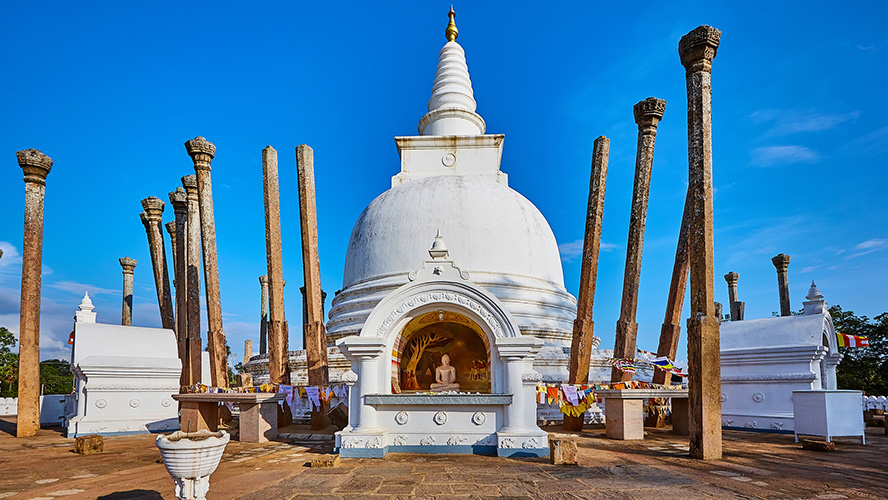
The ancient city of Anuradhapura, considered sacred in the Buddhist faith, spans 40 square kilometres and is home to various palaces, monuments, monasteries and dagobas (known locally as ‘stupas’). One of these, the Thuparamaya Dagoba, dates back to the 3rd century BC. It is considered to be one of the world’s largest archaeological sites.
Dambulla
Dambulla, which is located in Sri Lanka’s Matale district and marks another point of Sri Lanka’s so-called cultural triangle, lies 150 kilometres to the north-east of Colombo.
Rangiri Dambulla Cave Temple, which is dug into granite hills, was declared a UNESCO World Heritage Site in 1991. This monastery consists of five shrines dug directly into the granite, with the oldest dating back to the 1st century B.C. The complex spans a total surface area of 2,100 square metres and contains 157 statues of the Buddha of varying sizes, as well as paintings depicting Buddhist imagery.
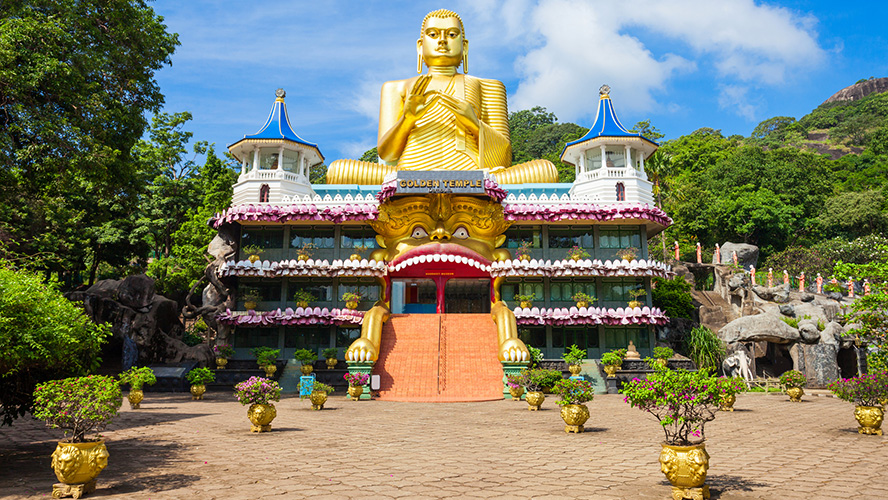
Colombo: Sri Lanka’s commercial capital
Visitors to Sri Lanka will likely fly into Colombo, which is the country’s commercial capital and the seat of its government. The country’s largest and most populous city (with some 800,000 inhabitants), Colombo is located in the western part of the island in a natural harbour that has been a strategic point for maritime trade since time immemorial. Colombo was named the capital city of Ceylon under British rule and remained the island’s capital from its independence in 1948 until 1978.
Colombo’s skyline is defined by its mixture of modern skyscrapers and colonial-era buildings. It represents a contrast between the old and the new, where Buddhist temples, mosques and churches co-exist with large government buildings, museums and markets.
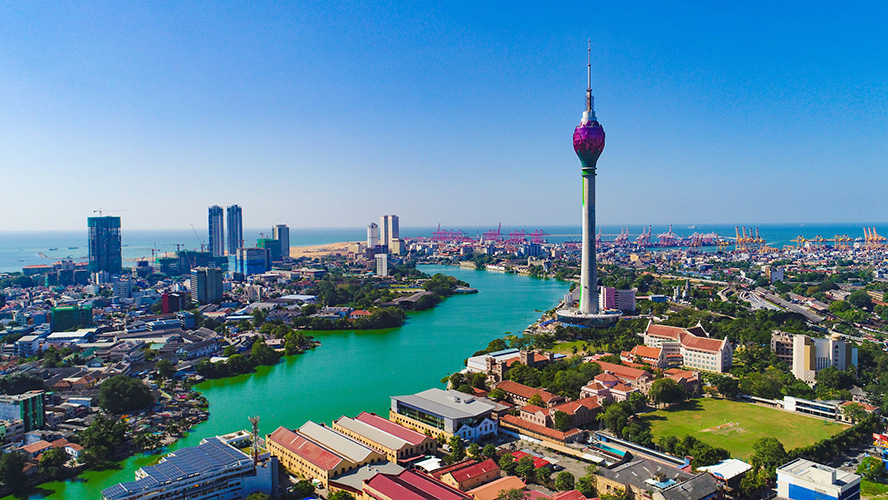
The Jami Ul-Alfar mosque, the Galle Face Green promenade, the Gangaramaya Buddhist temple, the Pettah market, the National Museum and the Independence Memorial are all worth visiting during your time in Colombo.
Sri Lanka’s Highlands and their tea plantations
Kandy
The city of Kandy is located just over 100 kilometres from Colombo, surrounded by impressive mountains and flanked by the shores of a giant reservoir. Considered the gateway to the Highlands, Kandy is Sri Lanka’s cultural and spiritual capital and a popular pilgrimage site for Buddhists who wish to visit the Temple of the Sacred Tooth Relic (Dalada Maligawa) which houses what is said to be one of the Buddha’s teeth.
The sacred city of Kandy was declared a UNESCO World Heritage Site in 1988 thanks to temples such as Dalada Maligawa and hundreds of ancient buildings which date as far back as the 15th century.
A visit to the Royal Botanical Gardens, the largest in Sri Lanka and home to an astonishing variety of plants, is an absolute must. If you happen to be visiting Kandy in August you’ll also be able to witness the annual Festival of the Tooth, known locally as ‘Esala Perahera,’ in which the aforementioned tooth is paraded around the town in a celebration involving lights, fire and elephants. This festivity dates back to the 4th century A.D., which is when the tooth was first brought to the island.
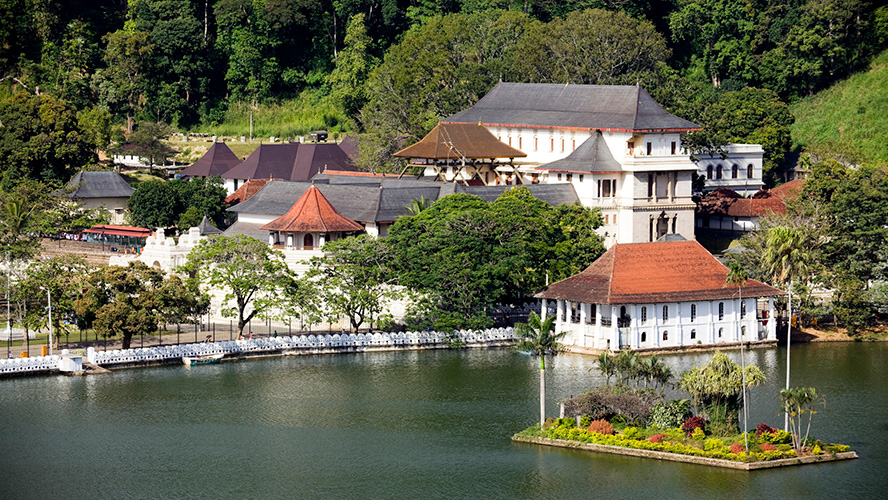
Nuwara Eliya
Many tourists take a train from Kandy in the direction of Ella in order to explore the country’s Highlands. This popular seven-hour route attracts swathes of international visitors due to the magnificent scenery that can be enjoyed from the train’s windows, ranging from forests to rolling green mountains, tea plantations, waterfalls and charming local villages. Due to high demand, we recommend buying your train ticket well in advance.
Nuwara Eliya, which is around three-and-a-half hours from Kandy, is a popular stop-off point at the half-way stage. The station in Nuwara Eliya is called Nanu Oya. At almost 1,900 metres above sea level, this city is more renowned for its natural scenery rather than its cultural or historical richness. Those who visit Nuwara Eliya are able to explore multiple tea plantations; admire Sri Lanka’s tallest mountain, Pidurutalagala, which stands at 2,527 metres above sea level; visit Devon Falls and Saint Clair’s Falls; explore the spectacular Horton Plains National Park; and spend a relaxing day on the shores of Lake Gregory.
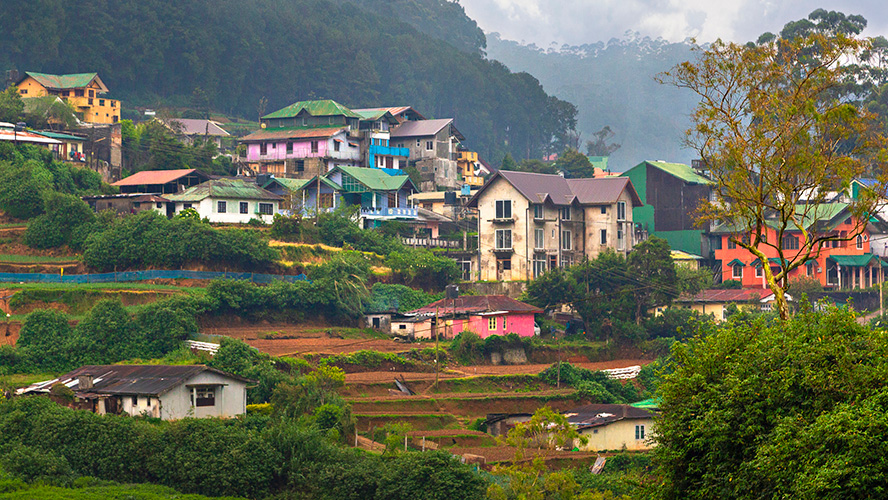
It is also home to several colonial-style buildings which date back to the period of British rule when the country was still named Ceylon.
Ella
The town of Ella is located in Sri Lanka’s Highlands. Standing in the central-southern part of the island, it is one of the country’s most visited municipalities due to its stunning scenery and rich biodiversity. This is the final stop on the famous train journey which departs from Kandy.
If you decide to stay in Ella for one or two nights, you’ll have time to traverse one (or more!) of its several hiking trails. Depending on the route you take, you may be able to admire the municipality’s wonderful natural surroundings or enjoy an original perspective of the colonial-era architectural masterpiece that is Nine Arches Bridge, which is one of Sri Lanka’s most iconic landmarks. Some of its other trails provide wonderful views of some of its most famous natural features, including Little Adam’s Peak and Ella Rock.
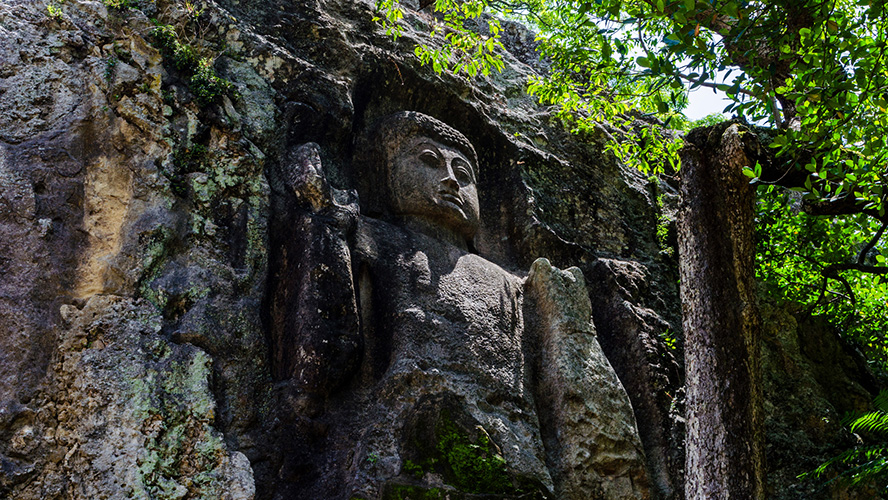
Tea plantations
Sri Lanka is the world’s fourth biggest producer of tea behind China, India and Kenya. It is also one of its biggest exporters. The Sri Lankan tea industry was born in 1870 when James Taylor, a Scottish tea planter, planted a seed that he brought from China in some soil on the outskirts of Kandy. Three years later, the first shipment of tea arrived in London from the country then known as Ceylon.
From that moment on, the industry continued to grow and grow. The Central Highlands’ humidity, cool temperatures and rainfall provide a climate that lends itself to the production of high quality tea. Many of the country’s plantations are located at altitudes of more than 1,500 metres, which gives Sri Lankan tea its characteristically intense flavour.
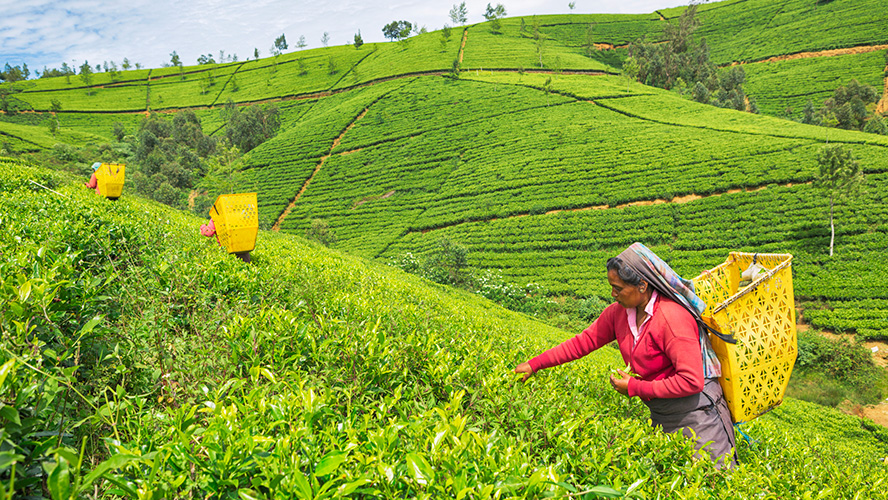
Many of Sri Lanka’s most important tea plantations are located close to Nuwara Eliya. If you’re travelling to Nuwara Eliya from Kandy, you’ll pass by the Glenloch Tea Factory, the Blue Field Tea Factory and the Damro Labookellie Tea Centre, all of which can be visited. If you stop off in Nuwara Eliya, you’ll be able to enjoy a tour of the Pedro Tea Estate: a famous plantation located less than four kilometres from the city centre that has been producing tea since 1885.
Galle: a jewel of Europe’s colonial past
“It is the best example of a fortified city built by Europeans in South and South-East Asia, showing the interaction between European architectural styles and South Asian traditions” according to the description on the website of UNESCO, which declared this coastal city’s old town and fortification a World Heritage Site in 1988.
Located 116 kilometres from Colombo, the south-eastern city of Galle was founded in the 16th century by the Portuguese colonisers who built its first fortification. Prior to this, Galle had been the location of one of Asia’s most important ports since ancient times. The seventeenth century marked the arrival of Dutch colonisers who, after defeating the Portuguese, turned the fortress into a single stronghold and walled the city with ten bastions that still stand to this day.
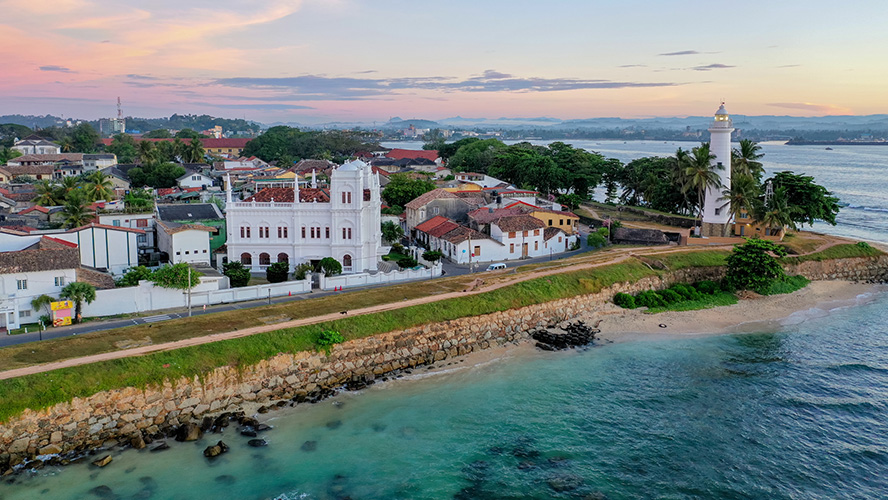
A visit to Galle is a journey back in time to the period of European rule. Make sure you find the time to visit its walled city, watchtower, lighthouse, mosques, Buddhist temples and other landmarks built in architectural styles characteristic of the region.
Top national parks for safaris
Minneriya
Alongside Yala, Bundala and Udawalawe, Minneriya is one of Sri Lanka’s largest and most visited national parks, receiving said classification in 1997. In total, 26 of the country’s national parks have been declared as nature reserves.
Minneriya is located in the middle of Sri Lanka’s so-called cultural triangle, occupying a 9,000-hectare protected area which contains the basins of three ancient reservoirs. These conditions make it popular with the local Asian elephants, which are the largest species on the planet. If you embark on a one-day safari through Minneriya National Park, you may see more than a hundred of these magnificent animals.
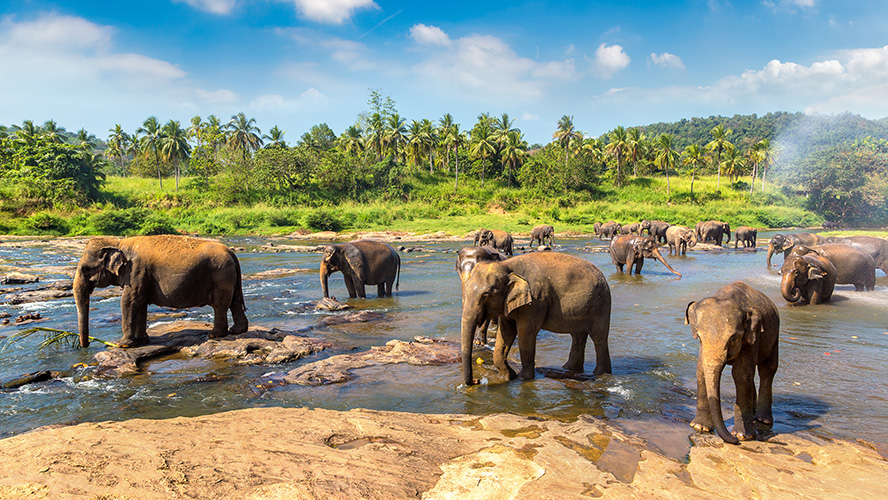
It is most common to see elephants between the months of May and October. This is the dry season, which is when the waters of the Minneriya reservoir recede, and lush green vegetation appears. When the rain returns, the elephants leave the park and go back to nearby jungles.
Minneriya is also home to 35 other indigenous species including leopards, the Sri Lankan sloth, the mousedeer and the Indian pangolin, which is an endangered species.
Yala national park
With a total surface area of 979 square kilometres and 130,000 hectares of protected land, Yala National Park is perhaps the most famous in the country. Lying close to the country’s south-eastern coast, it is renowned for the presence of elephants and leopards. In fact, there are few natural parks anywhere on the planet that have such high populations of these incredible species. Many other species also reside in this majestic park, such as bears, crocodiles, buffalo and a plethora of different birds.
The park is divided into five separate ‘blocks,’ of which only two are open to the public. This leaves three blocks ‘untouched,’ allowing the indigenous ecosystem to remain undisturbed. While you can book safaris at the park itself, it is more common to reserve these in advance.
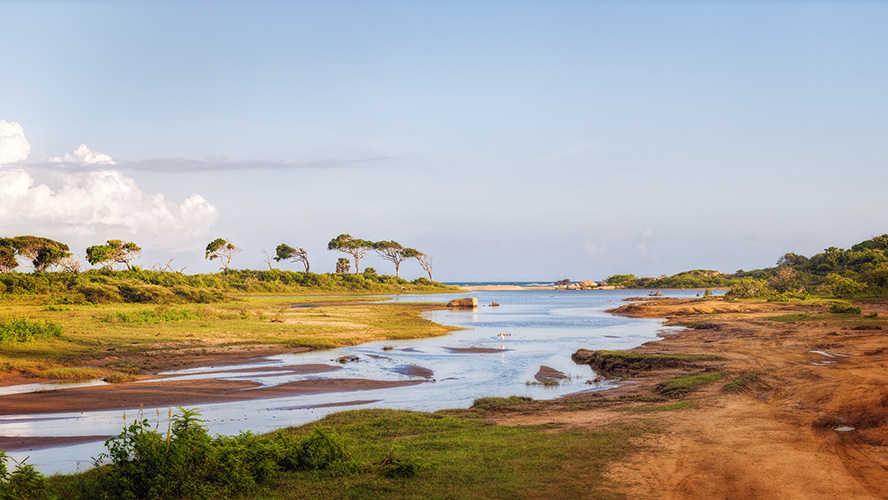
Given its popularity, you will likely see various 4x4s during the outing. This may detract from the magic of an otherwise wonderful experience.
Pinnawala: home of the elephant orphanage
The Pinnawala Elephant Orphanage is located in the village of the same name, lying 90 kilometres from the commercial capital of Colombo.
Created in 1975 by Sri Lanka’s Wildlife Conservation Department, its mission is to protect orphaned wild elephants from different parts of the country. Tourists who come to admire these protected pachyderms will be able to watch them bathe in the May Oya River, eat and do other daily activities. Practices such as mounting and bathing the elephants have provoked widespread criticism from various NGOs and swathes of citizens, who hold grave concerns about the conservation status of these majestic mammals.
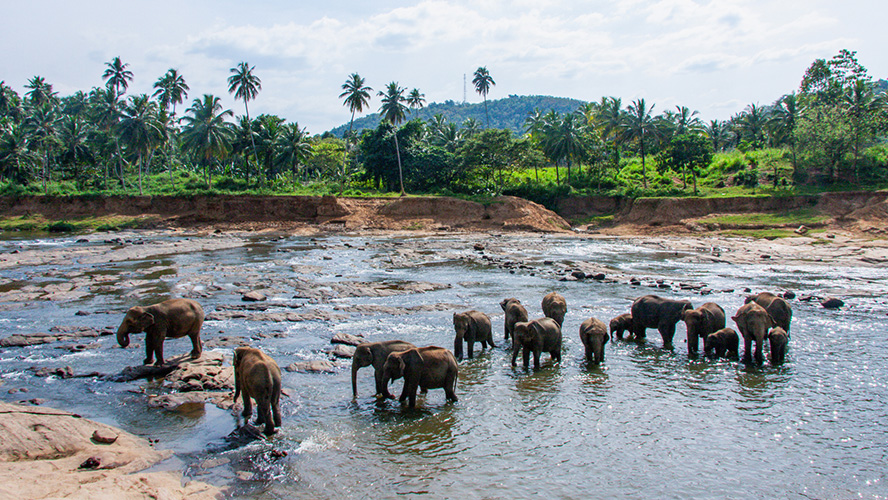
Sri Lanka’s best beaches
Besides its plethora of wild animals, Sri Lanka also boasts various types of beaches: ranging from kilometres-long stretches of unspoiled golden sands to more touristy beaches that are renowned for their nightlife and party atmosphere.
The coastal areas can be grouped according to climate. The south and west coasts enjoy good weather from December to March, while the north-west coast is bathed in sunlight from May through September.
On the less-trodden stretch of north-eastern coastline, the beaches of Trincomalee are renowned for their crystalline waters and regular whale sightings. The beaches of Nilaveli, meanwhile, are highly regarded by diving enthusiasts due to their impressive coral reefs, marine fauna and their proximity to Pigeon Island.
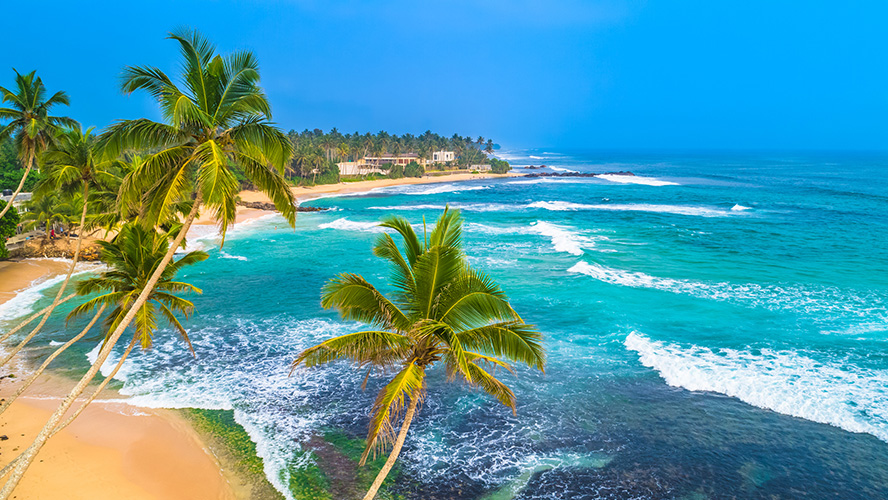
Sri Lanka’s golden beaches are found on its south-west coast, not too far from the city of Colombo. These beaches are popular among international tourists. The island’s famous Golden Mile is comprised by Bentota beach, Moratalla beach and Turtle beach. Weligama beach is widely considered to be a surfer’s paradise, while Mirissa beach, Talalla beach and Hikkaduwa beach are renowned for their coral reefs in addition to their good waves.
Where to stay in Sri Lanka
We recommend staying in the town of Dambulla in Sri Lanka’s Matale district. Located just 150 kilometres north-east of Colombo, it represents a perfect base for visiting different parts of the country during your visit to this part of Asia. It also marks a point on Sri Lanka’s so-called cultural triangle.
Our top recommendation is Barceló’s four-star Occidental Paradise Dambulla hotel, which is located in the heart of nature. It has a range of luxury villas that are well connected to the city of Dambulla. Their bright and comfortable rooms are equipped with everything you could possibly need to ensure optimum rest and relaxation during your holiday. This hotel is a fantastic starting point for enjoying everything that Sri Lanka has to offer. It also has two restaurants serving exquisite local and international cuisine, swimming pools for adults and children and a fully equipped gymnasium.
Barceló Hotel Group also has a hotel on Sri Lanka’s south-west coastline, located close to some of the country’s most popular beaches. This is the Occidental Eden Beruwala hotel, a luxurious five-star establishment located in the town of Beruwala.
The decoration of its 158 rooms is inspired by the local culture, while its rooms and facilities are meticulously designed to ensure optimum rest and enjoyment during your time in this Asian country. It boasts a wide range of restaurants, a luxurious spa, a hair salon, a beauty centre and a fully equipped gymnasium.























































